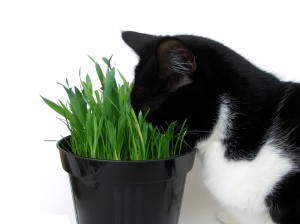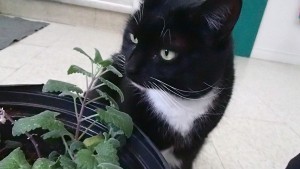Organic Trends For Our Furry Friends
Having a cat as an addition to your household/family can be rewarding in many ways, but taking care of a cat can be very costly. It starts with nutritious food, then cat treats that aid in digestion and clean teeth, not to mention decent cat litter, and lest we forget the dreaded veterinary bills. If you don’t start with good quality food, you’ll just have more veterinary bills because an animal needs real nutrients to thrive, just like we do. So, give them the very best you can and they will be happy and healthy. So what are some organic trends for our furry friends? Certainly, one way to cut down on costs is to make your own cat food and cat treats. If you have a less finicky cat, this will work out just fine. Mind you, there are the more finicky types that only like one type/brand of food and refuse to try anything else. The best thing to do for a treat is to give your feline some simply cooked fish or chicken and in very small quantities and choose organic.

Cat enjoying some cat grass
Another way to supplement a cat’s diet is with something called “cat grass”. There are two main species of cat grass; one is Dactylitis Glomerata aka Orchard Grass or Cock’s Foot, and Avena Sativa, also known as, common oat. Cat grass is said to aid in a cat’s ability to digest and push fur through their digestive tracts or in some cases help them vomit. With the added fiber from the grass, they will tend to not cough up as much clumps of fur and bile aka “fur balls” and possibly have less issues with vomiting. The best to way to save money when it comes to cat grass is to grow it yourself.
Cat grass is so easy to grow, you really only need 0.13-0.30 µmol as an average, depending on the species, some decent potting soil, a small pot, and water as needed. This is a low to medium light crop.
Cat grass can be purchased from some grocery stores year round and seasonally, from a local greenhouse. The typical price you would expect to pay from a grocery store is $5.99 and from a greenhouse $3.99. You can grow it yourself for approximately $0.50 (per round including soil, seed and fertilizer).
Another way to supplement your cat’s diet when it comes to treats is with something called “catnip”. Depending on your cat’s age (6 months or younger) they may or may not be attracted to catnip. It is also theorized that some cats that were fixed at a younger age will not be attracted to catnip because they did not have the chance to reach sexual maturity and thus become aware of things that attract them in such ways.

Joyce (JUST LED US’s favourite feline) checking out some organically grown catnip
Catnip is a perennial plant that is part of the mint family (proper name: “Lamiaceae”) and can have an aroma that’s a cross between mint and skunk. It tends to grow like a weed and will take up your whole garden if you allow it to, so make sure to plant it in a large pot of its own. Catnip tends to have issues with mildew, so keep the plants pruned and keep the center of the plant open so that air can flow freely. It can also have issues with whitefly and spider mites.
Use organic soil for potting (it can tolerate a ph of 6.1-7.8) and, when growing indoors, make sure your plant gets at least 6 hours of light and pinch off the flowers to foster leaf growth. Generally, 0.13 µmol is a desirable light level for indoor transplants and leafy crops of this family. This is a low to medium light crop as well. Harvest the leaves when the plant growth reaches 8 inches.
Catnip is very versatile when it comes to how it can be used for a treat. You can give your cat a few fresh leaves, or dry the leaves and spread them out on your cat’s favourite spot, or refill a catnip toy (or make your own!). You can also use the essential oil derived from the plant’s leaves and make catnip bubbles (with glycerin and soap) or catnip spray to either play with your cat or attract them to a particular toy, scratching post, etc. Catnip spray can also be made from an infusion of dried leaves steeped in hot water.
Humans can also consume catnip in the form of tea, which consists of the dried leaves of the plant. Catnip is said to have mildly sedating effects in humans. You can purchase organic catnip tea at some grocery stores or most health food stores for approximately $6.99 depending on the brand and the store.
Catnip can be purchased in most grocery stores and pet food stores. For organic catnip you’re looking to pay anywhere from $3.88-6.99 for a 35 g/1.23 oz bag depending on the brand and the store. You can also purchase pre-made catnip spray for approximately $6.99 depending on the brand and the store. Whereas, you can grow your own catnip for far less (approximately, $1.99 per round, including soil, seed and fertilizer) and have a continuous supply when you use LED grow lights. The yield will literally astound you!



